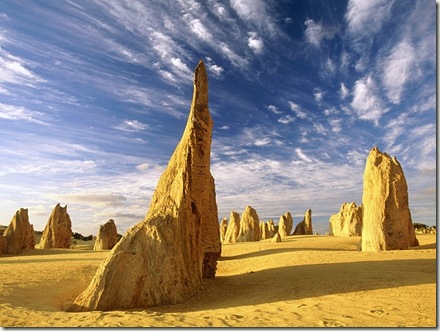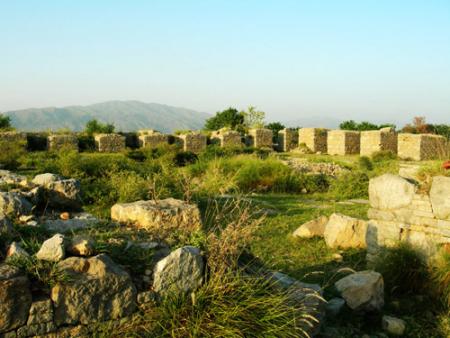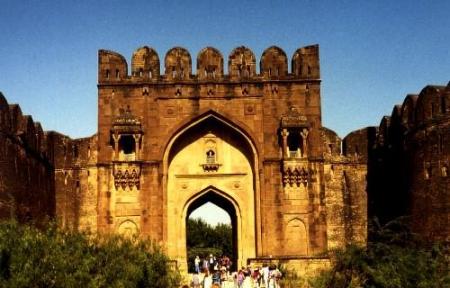People The population of Pakistan has been growing rapidly. In fact, within the last few years, their population has increased by about 10% each year. The Pakistani community is a mixture of ethnicities and races. The country’s cultural diversity is a result of many people who traveled all the way from India before settling permanently within Pakistan’s boundaries.
The Pakistan population is dominated by males, and the ratio is decisively skewed. There are several groups of people living in Pakistan, one of which is the Pathans, who live on the northwest part of Pakistan. This group has long sought for an autonomous government separate from Pakistan. Another prominent group is the Baluchis, who have mainly settled in the Southwest of Pakistan. About 97% of Pakistan’s population is Muslim, and this dominant religion is readily visible in the country’s beliefs and cultures. |
Pakistan is a tourist destination that has so much for the visitor to take in. It is considered “the next big thing” because of its potential for expansion in the areas of tourism, economy and business. Pakistan’s boundaries extend from the Indus River to the mountain valleys of Himalayas, ending at the coastline of the Arabian Sea. The landscapes of Pakistan run the gamut from arid deserts to lush greeneries. It is strategically positioned as a gateway to both Asia and Europe.
Pakistan is divided into three major regions: the plateau of Baluchanistan, the mountains found in the north of Pakistan, and the lowlands of the Indus. Most of Pakistan’s food is harvested from the Indus, which creates some of the most well-irrigated and fertilized soil in all of the country. This region’s wealth of natural resources makes it one of the most populated areas of Pakistan. Whoever said having fun in Pakistan is impossible? With all of the beautiful destinations in this country, there are unlimited possibilities for travelers. Pakistan is ideal for hiking, mountaineering, trekking, and other sports. |
Geography
Pakistan’s geography is a combination of plains, forests, deserts, plateaus, and hills which are located in the coastal areas of the country. The Indian and Eurasian tectonic plates overlap at two of Pakistan’s major regions, the Sindh and Punjab. Pakistan is also in close proximity to China, Afghanistan, India and Iran.
The climate is arid for most of the year. There are, however, cool or cold winters and very hot summers—these temperature extremes are frequent and not too difficult to deal with for the average Pakistani. Pakistan experiences very little rainfall.
The climate is arid for most of the year. There are, however, cool or cold winters and very hot summers—these temperature extremes are frequent and not too difficult to deal with for the average Pakistani. Pakistan experiences very little rainfall.
History Although Pakistan is a relatively new country in comparison to other countries in Southeast Asia, its history still dates back 50,000 years. Archaeologists have found remains of Homo Sapiens here, which is now believed to have been inhabited by the earliest humans. It was not until the 16th century that Pakistan finally became part of the Mughal Empire.
|
Famous Attraction
Though small, Pakistan is a country packed with many beautiful places to visit. In fact, Pakistan means the “Land of the Pure” in Urdu language. Some of these scenic sites include:
1. The Marakan Coastline: this is where the famous Alexander the Great marched during the Greek war in 325 B.C. The 754 kilometers of coastline also saw another great leader, Muhammad Bin Qasim, leading his army.
2. The Silk Road: during the ancient days of commerce, this road was used by silk traders to trade silk and barter goods. Today, it is now a car-accessible road that passes through the Himalayan range and Indus River.
3. The Indus Valley Civilization: this valley served as home for the ancient civilization, which dates back to 3000 B.C.
4. Karachi: this was the capital of Pakistan before Islamabad. Karachi is considered to have some of the most breathtaking beaches in the whole world. It is also recognized as one of the best destinations for tourists eager to shop, as well as for those seeking excellent food and drink.
5. Islamabad: the current capital of Pakistan, its wide roads and gorgeous sights have awed many. This city is most famous for the unique architecture used for both public establishments and residential houses. The Shah Fasal Mosque, which can accommodate about 10,000 worshipers at a single time, is also located in Islamabad.
1. The Marakan Coastline: this is where the famous Alexander the Great marched during the Greek war in 325 B.C. The 754 kilometers of coastline also saw another great leader, Muhammad Bin Qasim, leading his army.
2. The Silk Road: during the ancient days of commerce, this road was used by silk traders to trade silk and barter goods. Today, it is now a car-accessible road that passes through the Himalayan range and Indus River.
3. The Indus Valley Civilization: this valley served as home for the ancient civilization, which dates back to 3000 B.C.
4. Karachi: this was the capital of Pakistan before Islamabad. Karachi is considered to have some of the most breathtaking beaches in the whole world. It is also recognized as one of the best destinations for tourists eager to shop, as well as for those seeking excellent food and drink.
5. Islamabad: the current capital of Pakistan, its wide roads and gorgeous sights have awed many. This city is most famous for the unique architecture used for both public establishments and residential houses. The Shah Fasal Mosque, which can accommodate about 10,000 worshipers at a single time, is also located in Islamabad.
Nightlife Tourists will find plenty to occupy their time in Pakistan, especially during the night. There is so much going on that it’s impossible to see it all in one night. With all the restaurants, clubs and bars that Pakistan has, people have countless options to choose from. Types of entertainment might involve anything from quiet, relaxing cafes to lively karaoke bars.
Whatever you’re up to after dark, it can surely be found in Pakistan. Tourists enjoy the beauty of the colorful lights during the night. Pakistan is filled with fun places to visit regardless of the hour. |
Culture
Pakistan’s culture is infused with a certain type of rigidity as a result of its religious structure. Tourists and locals alike are given plenty of social cues that help them understand religious customs and traditions. During no time of year is this more evident than during the period of Ramadan, when drinking and eating during daylight is prohibited—if absolutely necessarily, the acts should be discreet. There are other norms that the foreign tourist will need to adjust to. For example, it is considered rude and offensive to use the left hand when giving and receiving. Public display of affection between opposite sexes is not tolerated. Dress codes for Pakistani men and women also conform to strict codes.
Cuisine To a certain degree, one can say that typical Pakistan cuisine is similar to other cuisines of the Indian region. But even within Pakistan, influences on food vary due to topographical location. For instance, those who live in Punjab and Sindh share similar cuisines to the people of the northwest Indian continent, while the Western portions of Pakistan have similar cuisines to those of Iran and Afghanistan. In fact, there is diversity throughout the country’s culture and cuisine. Generally speaking, Pakistani foods are spicier than those eaten in the Middle East, but not as spicy as those in India.
|
Qunar







